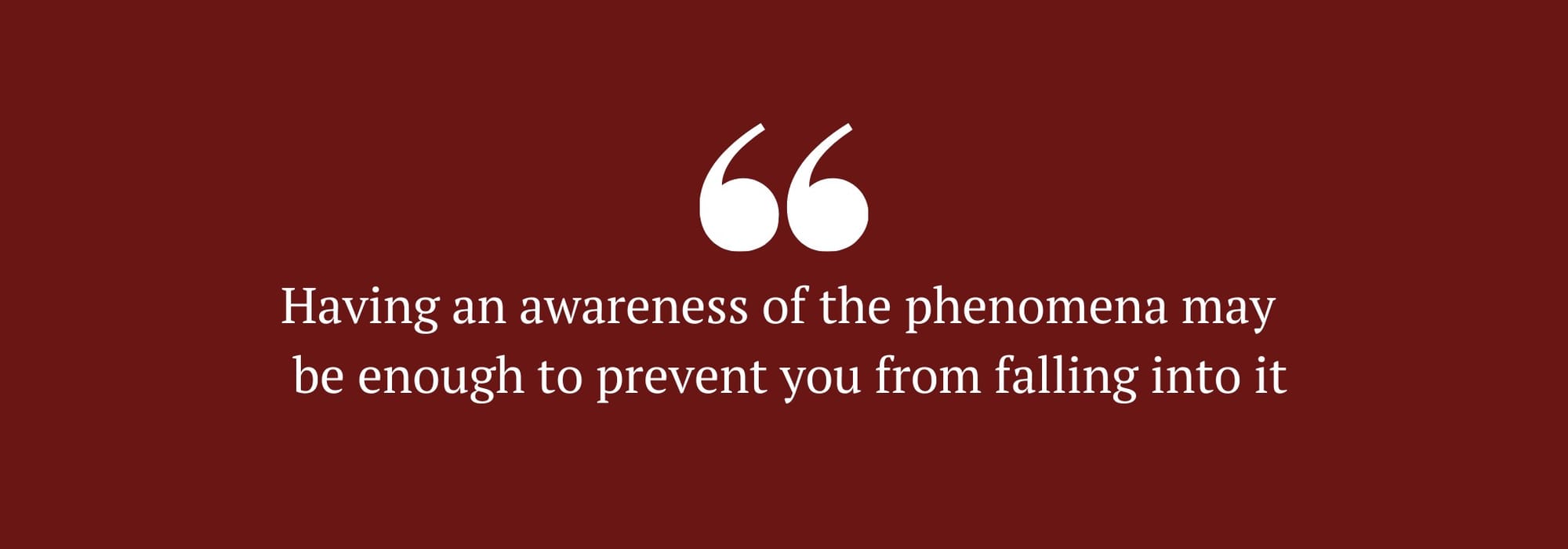Why do some people find it hard to take action when it’s needed the most?
Have you ever felt frozen to the spot during a tense moment, or in an emergency? Or hesitant to step in and take action, more like an extra passing through the scene than a featured actor? If so, you may have experienced the ‘bystander effect’ – a social psychological theory that proposes that individuals are less likely to step up to offer help to another when other people are around.
The theory was first proposed back in 1964, in light of the murder of Kitty Genovese, a 28-year-old woman who was assaulted and killed outside the apartment building she lived in. Following the murder, The New York Times published an article which claimed that 38 people witnessed the attack, yet none of them called the police or stepped up to help her – though this was called into question later. But from this incident, the bystander effect (also sometimes called ‘Genovese syndrome’ after Kitty Genovese) became a regularly studied and debated phenomenon in the field of psychology.
At the time, the concept of the bystander effect was popularised by social psychologists Bibb Latané and John Darley. Ultimately, they believed that the bystander effect was caused by two facts. Firstly, the diffusion of responsibility, meaning that because there are more people there is less personal responsibility placed on an individual, which means they feel less inclined to take action, or believe it is unnecessary as someone else will. The second is social influence, when we take our prompts from others’ behaviour – if no one else is doing anything, why should you?
But in order to develop a better understanding of what was happening, Latané and Darley carried out a series of experiments to test the bystander effect in non-emergency situations. In one, subjects asked a bystander for their name, with more people sharing their name when the participant gave their own first. In another, participants asked people for a 10 cent coin, with the number of people giving them one increasing when the participants gave a reason, such as saying their wallet had been stolen.
Latané and Darley went on to propose that there are five characteristics of emergencies that can trigger the bystander effect...
-
Emergencies that involve a threat of harm or actual harm.
-
Emergencies that are unusual and rare.
-
When the type of action required in an emergency differs from situation to situation.
-
Emergencies that cannot be predicted or expected.
-
Emergencies that require immediate action.

And when the bystanders are in this situation, they then go through a cognitive and behavioural process: notice something is going on; interpret the situation as being an emergency; degree of responsibility felt; recognise the form of assistance; implement the action choice. All these factors play a role in whether action is then taken.
Since the work of Latané and Darley, much more research into the bystander effect has taken place – shaping our understanding of why and how it might happen. In 2011, a meta-analysis of the bystander effect published in the journal Psychological Bulletin found that the bystander effect was actually reduced when situations were perceived as dangerous, perpetrators were present, and the cost of intervening was physical – offering a different perspective to Latané and Darley’s early research. And in 2016, a study published in Psychology of Violence found that ‘highly masculine’ subjects were less likely to take action to help the victim than more feminine subjects.
But whatever it is that is happening in our minds when we’re faced with an emergency, getting trapped in the bystander effect can come with feelings of guilt and regret. So, how can you become an active bystander instead?
To begin with, just having an awareness of the phenomena may be enough to prevent you from automatically falling into it as you rebel against inaction. But the first thing you might want to do is to look into what precisely you should do in common emergency situations. You will already know to call 999 for police, ambulance, and the fire service, but it’s also worth being aware of being able to text the British Transport Police on 61016 for crime prevention or reporting an incident that has taken place on public transport. You may also wish to brush up on your first aid skills so that you have the necessary knowledge to step in where appropriate. The British Red Cross offers courses and online workshops, as well as information on their site at redcross.org.uk.
The same goes for growing your awareness of how to step in when you see someone showing signs of distress in a mental health context. If someone appears to be in crisis, you can call 999. Outside of an emergency, when you have noticed someone is struggling, the best thing you can do is to ask them, in a supportive way, how they are feeling.
This may apply if you have noticed that someone is withdrawn or not acting like their usual self, and also if you are worried that they may be at risk of harming themselves. Contrary to the belief that talking about suicide can put the idea in someone’s head, the advice from suicide prevention charities is to ask someone directly, but sensitively, whether they are thinking about suicide. Breaking the bystander effect when it comes to mental health can be as easy as taking the time to properly check-in with someone.
Something that is often talked about in relation to the bystander effect is fear. We won’t always know how we will react to an emergency until we’re in the moment, and at that point the fear, and any other psychological factors, may take over, rooting us to the spot. But by educating ourselves on the resources that are available, and processes that we can follow, we can take back some control and equip ourselves with the knowledge we need to take action when it is needed most.
Outside of emergency situations, if you are worried about an ongoing situation you can use the following resources and services:
A non-emergency police matter
Your local police force may have an online service where you can report non-emergency crimes, sometimes anonymously. You can also visit crimestoppers-uk.org or call them on 0800 555 111.
Vulnerable adult safeguarding referral
If you are worried about a vulnerable adult who is at risk of abuse, you can make an adult safeguarding referral via your local council website.
Child abuse
You can report child abuse to the NSPCC using its online form at nspcc.org.uk. The more detail you know the better, but you can still reach out even if you do not know everything about the child you are concerned about.


Comments